The Inventory Method setting must be set to Perpetual. Open Inventory > Options to review the setting as shown below:

Review Inventory Count Overview for more details on this setting.
Launch the Financials > Utilities > Verifying Balances from the main EBMS menu.
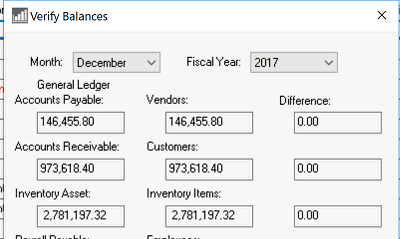
The Inventory Asset balance on the left column of the utility reflects the total of the inventory asset accounts. This could be one ore more accounts. The general ledger accounts that contain FIFO inventory within EBMS are classified as Inventory. Note that all inventory asset values that reflect inventory that is NOT recorded in EBMS as FIFO inventory MUST be classified as Other Inventory. EBMS will require multiple inventory GL accounts if inventory is recorded as an asset but is not within the EBMS inventory system as FIFO inventory. Review the Tracking Counts > Tracking Inventory Counts Overview section of the inventory documentation for more details on perpetual inventory.
-
Perpetual inventory accounts: These accounts must match the inventory within the EBMS inventory system. EBMS will compare the total inventory value for a given period with the general ledger account(s) balance in general ledger.
-
Other inventory values: All inventory values that are not includes in the perpetual inventory value within EBMS MUST be recorded within inventory asset account(s) classified as Other Inventory. Inventory asset values such as supplied, adjustments, or any other inventory that is not identified as perpetual inventory within EBMS. Do not mix inventory values between EBMS inventory items and other inventory in the same general ledger account.
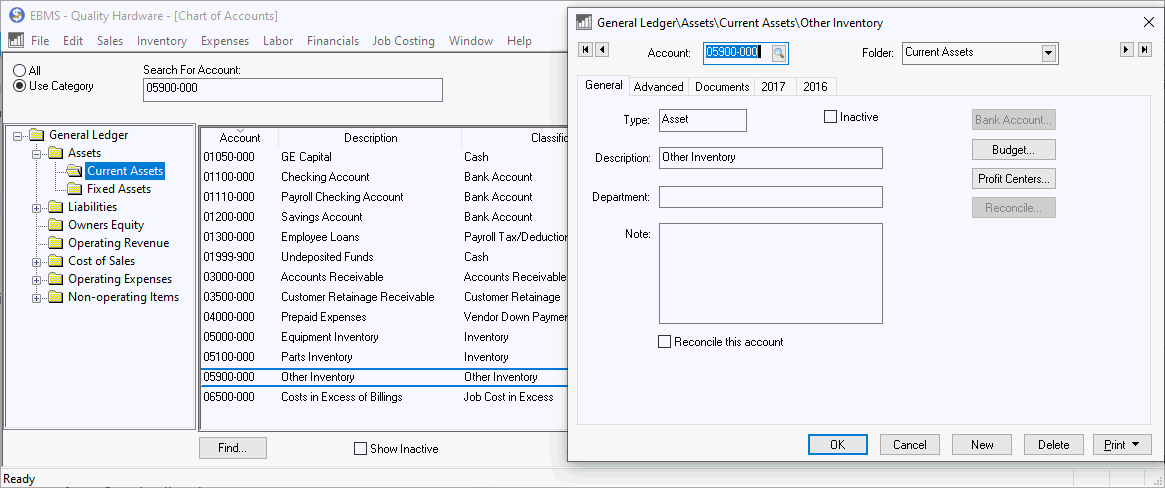
-
Use a journal entry to adjust the inventory asset balance (left column). Review the Journals > Creating Journal Entries documentation.
-
Run the Reports > Inventory > Counts / Value > Inventory Value report from the File > Reports EBMS menu if the Inventory Items’ balance on the right column of the Verify Balances utility is incorrect.
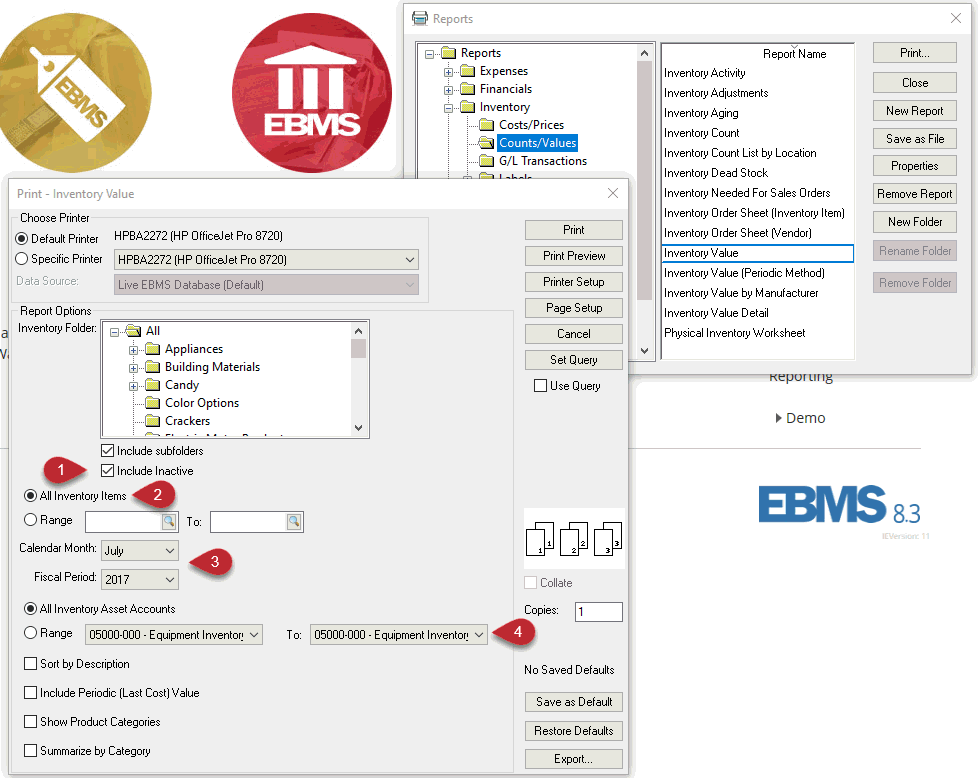
-
Verify that the report is not ignoring the inactive inventory that has value by enabling the Include Inactive option.
-
Select the All Inventory Items option to list all items in the system.
-
Make sure that the Calendar Month and Fiscal Period match the Month and Fiscal Year on the Verify Balances utility:
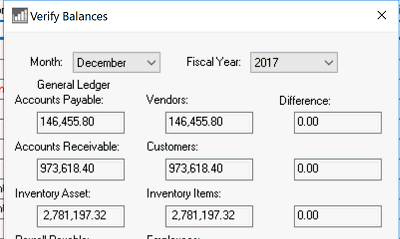
-
Select All Inventory Asset Accounts to match the Verify Balances utility.
-
-
Disable the Inactive option on any inventory item that contains count and values until the items are sold.
-
Do not continue with the next step till the Inventory Asset and the Inventory Items total equal. Review the Tracking Counts > Adjusting Inventory Count and Value section of the inventory documentation for inventory adjustment instructions.
Continue with this step only when the Inventory Asset total in the Verify Balances (Step 2) utility match the Inventory Items total. This step may be necessary to run if multiple inventory asset accounts classified as Inventory are listed in the general ledger. This step will verify that the balance for a specific asset account match. Run the same Inventory Value report as described in 2D but query for a specific asset account Range as shown below:
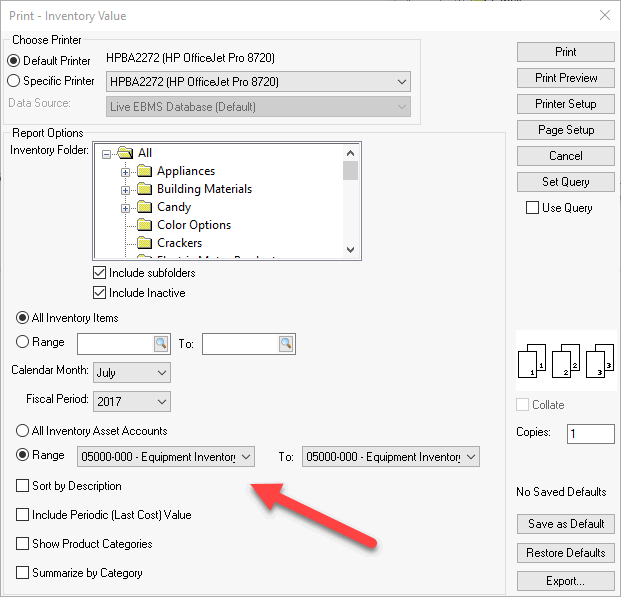
Verify that the total at the end of this report equals the total value within the specified asset account. Use a journal entry to adjust the specified account and offset the journal entry with another inventory asset account. Since the total of the inventory asset accounts match the total inventory then any journal adjustment should merely move the value from one inventory asset account into another account with the same classification.